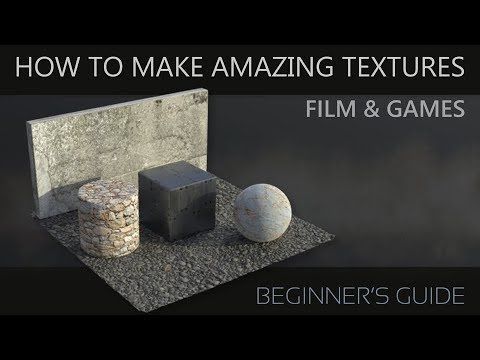Texturing is a crucial aspect of 3D modeling that can make or break the realism and aesthetic appeal of your creations. Whether you are a beginner or a seasoned professional, mastering the art of texturing can take your 3D models to the next level. In this article, we will explore some best practices for texturing in 3D modeling to help you create stunning and lifelike visuals.
Understand Different Types of Textures
Before diving into texturing, it is essential to understand the different types of textures that you can use in your 3D models. Some common types of textures include diffuse maps, specular maps, normal maps, and displacement maps. Each type of texture serves a specific purpose in creating realistic surfaces and materials in your 3D models.
Use High-Quality Textures
When texturing your 3D models, it is crucial to use high-quality textures to achieve the best results. Low-resolution textures can make your models look pixelated and unprofessional. Invest in high-resolution textures or create your own to ensure that your models look realistic and visually appealing.
Pay Attention to Detail
When texturing your 3D models, pay attention to detail and focus on adding realistic features such as scratches, bumps, and imperfections. These details can make your models look more lifelike and believable. Experiment with different brushes and tools to add depth and character to your textures.
Experiment with Different Texturing Techniques
There are various texturing techniques that you can experiment with to achieve different effects in your 3D models. Some popular techniques include procedural texturing, image-based texturing, and hand-painting textures. Try out different techniques to find the ones that work best for your specific project.
Consider Lighting and Shadows
Lighting and shadows can have a significant impact on how your textures appear in 3D models. When texturing, consider how lighting will interact with different surfaces and materials. Experiment with different lighting setups to see how they affect the textures and overall look of your models.
Optimize Your Textures
Optimizing your textures is essential for ensuring that your 3D models run smoothly and efficiently. Pay attention to the file size of your textures and try to keep them as small as possible without compromising quality. Use texture atlases and compression techniques to reduce the overall file size of your models.
Seek Feedback and Iterate
Finally, seek feedback from others in the 3D modeling community and be open to constructive criticism. Share your work with friends, colleagues, or online forums to gather feedback on your textures and improve your skills. Iterate on your texturing techniques based on feedback to grow as a 3D artist.
In conclusion, texturing is a vital aspect of 3D modeling that can elevate your creations to new heights. By understanding different types of textures, using high-quality textures, paying attention to detail, experimenting with techniques, considering lighting and shadows, optimizing textures, and seeking feedback, you can master the art of texturing in 3D modeling. Practice these best practices, and you will see a significant improvement in the quality and realism of your 3D models.
